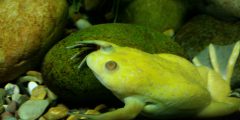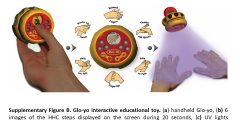Coronavirus: Risk, rumour and resilience
February 11, 2020
I was just starting to write this post, when I saw a tweet from Jeremy Farrar, Director of the Wellcome Trust, quoting Tedros Adhanom Ghebreyesu, Director-General of the World Health Organisation, who said, as widely reported: “This is the time for facts, not fear. This is the time for science, not rumours. This is the time for solidarity, …
Engineering biology? Sure! But which kind?
February 7, 2020
This is a guest post by Massimiliano Simons who is a postdoctoral researcher at the department of philosophy and moral sciences at Ghent University, Belgium. *** Biology is a mess, not only the natural processes out there but also the science in the lab. Every biological rule seems to have exceptions and all biological laboratories …
Moral Dilemmas in Science Journalism about Genetics Research: The case of gene drives
January 31, 2020
Guest post by Rebecca Hardesty, Ph.D. Rebecca Hardesty is a postdoctoral scholar in science education and communication at UC San Diego in its Division of Biological Sciences and the Teaching + Learning Commons. *** The New York Times Magazine rang in the New Year with a featured piece by Jennifer Kahn recounting the promises and …
Warnings, war metaphors and infectious diseases: A little lit review
January 30, 2020
We are living through another global outbreak of an infectious disease: this time it’s a new version of the coronavirus. This outbreak of disease is, as usual, accompanied by an outbreak of war metaphors…. (some of them now collected in a later blog post). This brings back memories of other outbreaks, both in animals and …
Bushfires and climate change communication: Between amplification and attenuation
January 10, 2020
For about a decade I have been thinking and writing about extreme weather events and their links to human-induced climate change, and this included quite a few references to Australia, especially droughts, heatwaves and bushfires. I thought the Las Conchas Fire in New Mexico, lived through by some of my family, was bad. I thought …
Spread the message, not the germs: A retrospective on a collaborative project
January 3, 2020
More or less exactly a decade ago, I was working on various science and society issues, including nanotechnology, antimicrobial resistance and infection control. This brought me into contact with a variety of people at the University of Nottingham, including Kim Hardie, a molecular microbiologist, Joel Segal, a specialist in manufacturing engineering, Jacqueline Randle, then working …
Making Science Public 2019: An overview
December 17, 2019
Every year I think: This will be the last year I write something for this blog… and each year I write a bit more. And so it was this year. Whether that’s a good thing or a bad thing, I really don’t know. But it distracts me from life’s increasing troubles and keeps me sane. …










